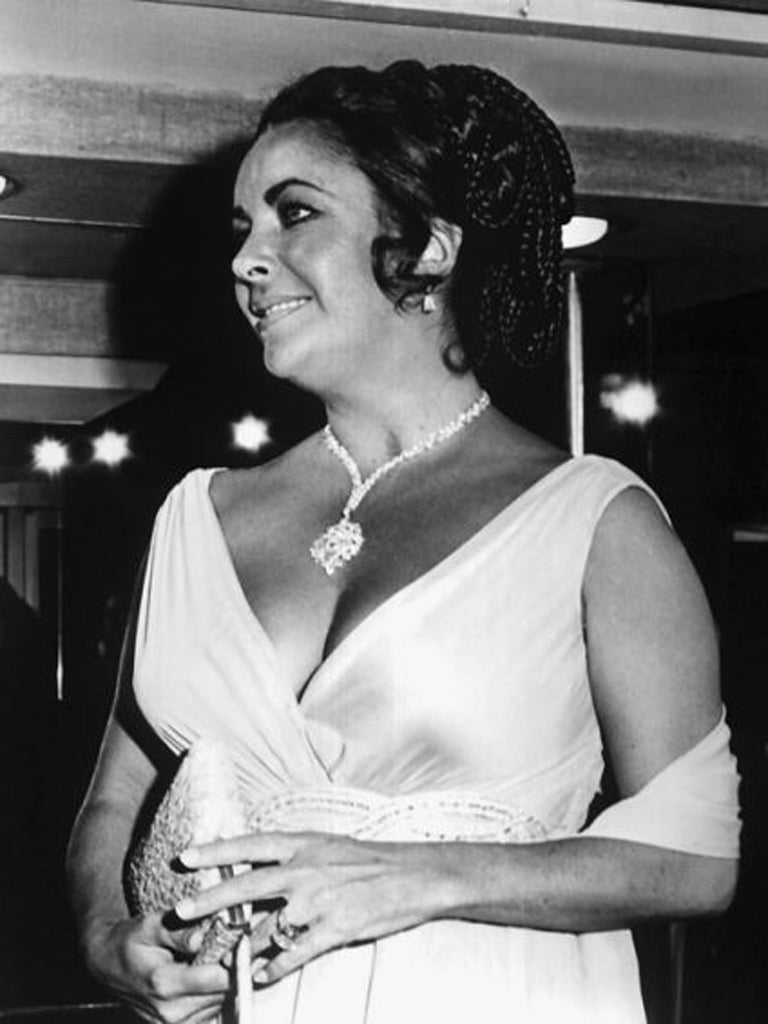Viv Groskop: How Liz Taylor put her jewellery to work
Notebook

Your support helps us to tell the story
From reproductive rights to climate change to Big Tech, The Independent is on the ground when the story is developing. Whether it's investigating the financials of Elon Musk's pro-Trump PAC or producing our latest documentary, 'The A Word', which shines a light on the American women fighting for reproductive rights, we know how important it is to parse out the facts from the messaging.
At such a critical moment in US history, we need reporters on the ground. Your donation allows us to keep sending journalists to speak to both sides of the story.
The Independent is trusted by Americans across the entire political spectrum. And unlike many other quality news outlets, we choose not to lock Americans out of our reporting and analysis with paywalls. We believe quality journalism should be available to everyone, paid for by those who can afford it.
Your support makes all the difference.Reports of the auction of Elizabeth Taylor's estate this week all focus on the idea that the baubles, trinkets and voluminous silk kaftans "tell the story of her life and loves". And, of course, they do. The dozens of breathtaking jewels are a testament to her captivating beauty as a young woman, one any man would bankrupt himself for. Elizabeth Taylor was not someone who could be fobbed off with a Tiffany key ring.
But the real story behind these geegaws appears to be a sad one. There were roomfuls of handbags which spoke of a world where it's almost depressing to be able to afford absolutely anything you want. Because nothing actually means that much to you. The Louis Vuitton luggage collection was laugh-out-loud ridiculous: she owned every single piece. But the designer kaftans were the most poignant. At least when you're wealthy you can really put on weight in style.
Ultimately, most of these items have no genuine meaning, it turns out. The auction bidders want them because huge gems and carats have monetary worth. And all the more so because they belonged to Elizabeth Taylor. But their sentimental value is zero. And after a life like Taylor's – of highs, lows, grand passions and betrayals – that seems extraordinary.
How bizarre, for example, that there is no one left who wants to keep the legendary Richard Burton ring, which went for $8.8 million. Taylor had four children (none by Richard Burton, though), 10 grandchildren and four great-grandchildren. We can't know why none of them kept back that ring – along with many other seemingly emotionally significant pieces.
Reading between the lines, though, it's obvious it was Taylor's own wish that all this stuff be sold off. "I never, never thought of my jewellery as trophies," she once said. "I'm here to take care of them and to love them. When I die and they go off to auction I hope whoever buys them gives them a really good home." Part of the proceeds of this week's auction will go to her Aids foundation.
So that's Taylor's real legacy. One of a woman who had her feet firmly on the ground. She knew that once she was gone, the money the jewels would raise for charity would be more meaningful than anything the pieces themselves ever stood for. Good on her. Except I can't help thinking she didn't mean the Burton ring. It was 33.29 carats! Somewhere in heaven violet eyes are flashing. Anyone want to club together and buy it back for her?
The pleasures of scorn
December brings an avalanche of reading recommendations and lists of books of the year. I scour them avidly for evidence of brown-nosing and intellectual showy-offiness. But if anyone includes a book I have enjoyed then I think they are a genius and that their recommendations must be treated with reverence.
Annoyingly, almost every list this year has Daniel Kahneman's Thinking, Fast and Slow, a brilliant work which does for the thought process what Malcolm Gladwell did for blinking. It's simply one of the best books I've ever read. It has also been talked up as The Book of 2011. And rightly so.
But when everyone agrees with you, it doesn't half take away the fun of scorning their rubbish recommendations.
Join our commenting forum
Join thought-provoking conversations, follow other Independent readers and see their replies
Comments